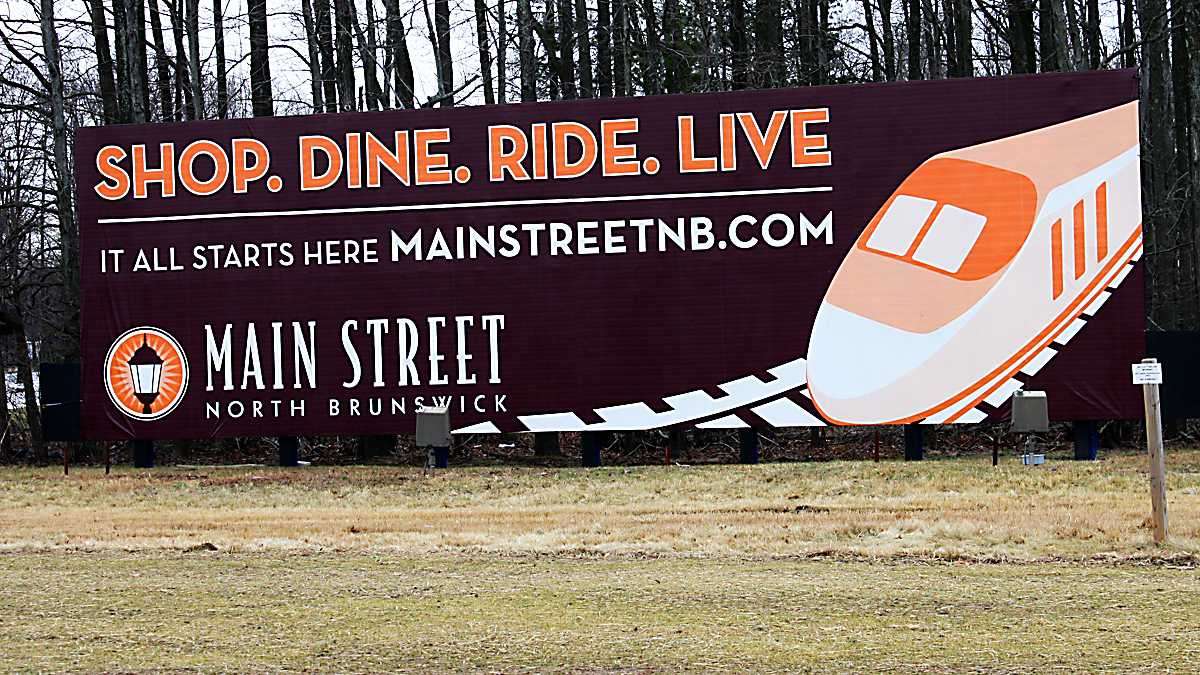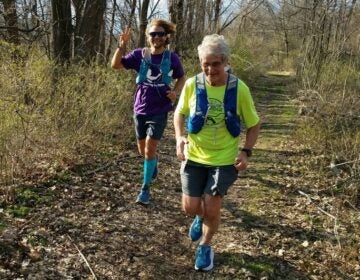Explainer: How transit villages help NJ combat sprawl, car culture

The state announced last month that Park Ridge and Irvington were designated as New Jersey’s 29th and 30th Transit Villages, making them eligible for technical assistance and allowing them to apply to a $1 million annual pool of funding for road and transit improvements.
What it is: The state Department of Transportation launched its Transit Village initiative in 1999 to encourage dense, mixed-use development within a half-mile of train stations, with the goals of boosting local economies and allowing people to walk or bike to shops, jobs, and mass transit instead of driving. Towns with bus terminals may also participate.
“In effect, we are returning these stations to their historical role: a place where growth, recreation, opportunity, and access became one. I am pleased that this program will also enhance investment in our urban areas and promote community leadership,” Gov. Christie Whitman said at the time.
Related: Northeast Rail Corridor to get new New Jersey stop with its own transit village
The state’s Transit Village Task Force meets six times a year to designate transit villages, and its member agencies work together to direct funding to the participating towns. They are the Council on the Arts, Department of Community Affairs, Department of Environmental Protection, Economic Development Authority, Housing and Mortgage Finance Agency, Office for Planning Advocacy, Main Street New Jersey, and Redevelopment Authority.
The historical background: Transit-oriented development or TOD is a response to the urban sprawl and rise of the suburbs that accelerated in the mid-20th century due to expansion of highways and automobile use. To slow the loss of open space to development and revitalize cities that had lost population and wealth, governments and planners began coordinating incentive programs and other efforts to encourage more development near mass transit.
New Jersey joins in: The densely urbanized state has a long history of transit-oriented development. NJ Transit was created in 1979 to reverse the decline of public transportation in the state, and the state redevelopment plan adopted in 1986 encouraged growth in areas where infrastructure already exists. In 1992 NJ Transit created its Transit-Friendly Planning, Land Use & Development (TFPLUD) program to provide guidance and technical assistance to towns interested in creating transit-focused zoning or development plans. The Transit Village program was subsequently created to reward communities who “get” transit-oriented development, according to Vivian Baker, the NJ Transit official who directs TFPLUD.
A surge of development: An example of one of the many towns that has received TOD assistance from NJ Transit is Somerville in Somerset County. It initially sought help redeveloping an old landfill next to a station on the Raritan Valley Line, and eventually earned Transit Village designation in 2010. NJ Transit spent $15 million to rebuild the station in 2011, and an apartment building opened on the former site of a mall a block away last year. Plans are under way for several more projects: 117 apartments at a former auto junkyard next door; 93 units on the nearby site of a demolished commercial building; and a potential 675-unit development on NJ Transit land next to the station.
Winning designation: Towns trying to join the Transit Village initiative are required to identify existing transit, demonstrate willingness to grow, adopt a TOD redevelopment plan or zoning ordinance with transit-supportive design and parking regulations, and identify specific sites and projects. They must also include affordable housing in the transit village district, identify bike and pedestrian improvements, establish a management organization, and identify “place-making” efforts, community celebrations, and cultural events.
The designated towns are Pleasantville, Morristown, Rutherford, South Amboy, South Orange, Riverside, Rahway, Metuchen, Belmar, Collingswood, Bloomfield, Bound Brook, Cranford, Matawan, New Brunswick, Journal Square/Jersey City, Netcong, Elizabeth, Burlington City, Orange, Somerville, Montclair, Linden, West Windsor, East Orange, Dunellen, Summit, Plainfield, Park Ridge, and Irvington.
The benefits: Transit-village towns may apply for grants from a $1 million annual pool. Recent awardees include Dunellen Borough in Middlesex County, which received $400,000 for streetscape improvements, and West Windsor in Mercer County, granted $43,000 for a bus-shelter relocation and sidewalk extension. Other benefits include priority funding and technical assistance from several state agencies and the state’s “commitment to the municipality’s vision for redevelopment.”
A 2012 study of six transit-village towns by two Rutgers professors found increases in residential property values but could not confirm that they resulted from transit village designation. The analysis “suggests that the forethought, commitment, and political will required to apply for transit village status may be what sparks municipal development rather than the designation itself,” the authors wrote.
Fears and reality: TOD efforts often encounter fear of overdevelopment, including the financial burden of educating more children and, ironically, increased automotive traffic].
In reality, transit-oriented developments tend to have smaller households with fewer children and cars, according to a 2012 presentation by Jon Carnegie, executive director of the Alan M. Voorhees Transportation Center at Rutgers’ Edward J. Bloustein School of Planning and Public Policy.
One study of 10 communities found that more than 45 percent of new units within half a mile of transit had only one resident, while 37 percent had two residents. By comparison, in new units that were farther away, 30 percent had one resident and 43 percent had two. The study found that 94 percent of households in new TODs had no children in public schools. In addition, more than 10 percent of the households had no car and 65 percent had one car; in new units more distant from stations, almost all households had cars — about 38 percent with one and 60 percent with two.
Other issues can also complicate transit-village development, such as affordable housing requirements and general economic conditions. In West Windsor, a developer sued over the town’s redevelopment plan for a site near the train station, resulting in settlement that sharply increased the allowed housing density. Then the Fair Share Housing Center objected, saying the affordable component was inadequate. That issue was settled but there is still no housing, since the developer says financing for condominium development has dried up.
Continued expansion: Gov. Chris Christie has voiced support for the program. When Montclair and Somerville were designated in July 2010, Christie was quoted in the NJ DOT press release, saying, “The Transit Village program encourages local officials to surround nearby transit facilities with a vibrant mix of residential, retail, and commercial uses. This type of development spurs sustainable economic growth, maximizes the value of our transit investments, and benefits the environment.”
State funding for the program was eliminated in 2011 but restored the following year. The number of included towns has continued to grow under Christie, with three designated in 2010, three in 2012, one each in 2013 and 2014, and two so far this year.
Related programs: In 2008 the state created the Economic Development Authority’s $1.75 billion Urban Transit Hub Tax Credit to spur large development projects near transit in nine cities: Camden, East Orange, Elizabeth, Hoboken, Jersey City, Newark, New Brunswick, Paterson, and Trenton. Requirements included a minimum $50 million capital investment and at least 250 full-time employees at the new facility.
The program was folded into Grow NJ with passage of the New Jersey Economic Opportunity Act of 2013, which consolidated the state’s corporate incentives. Grow NJ continues to allow incentives for “megaprojects” in urban-transit hubs, as well as for projects in 13 Urban Transit Hub municipalities, four Garden State Growth Zones cities (Camden, Trenton, Paterson, and Passaic), certain distressed municipalities, and areas that meet other specific criteria.
_______________________________________________
NJ Spotlight, an independent online news service on issues critical to New Jersey, makes its in-depth reporting available to NewsWorks.
WHYY is your source for fact-based, in-depth journalism and information. As a nonprofit organization, we rely on financial support from readers like you. Please give today.




